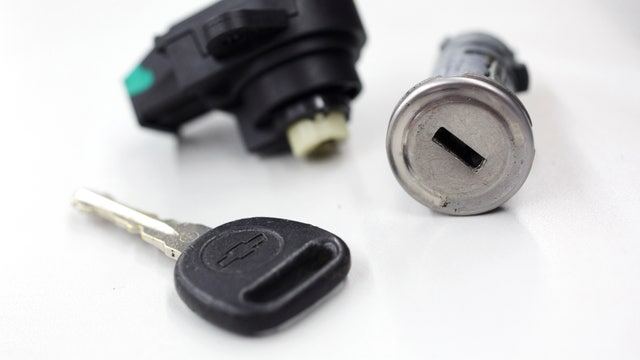The Real Strategy Behind the GM Victims' Fund
Despite the worst recall in its history, General Motors’ sales and its stock price are still in solid territory. GM reports earnings Wednesday, Wall Street forecasts 83 cents a share for the fourth quarter of 2014, 16 cents better than the year prior, which came in at 67 cents. GM recently said its December U.S. sales were its best in seven years, up 19% versus a year ago.
The GM victims’ fund is now facing 4,180 claims contending the carmaker’s defective ignition switches caused injuries and death, with 77 injury and 51 fatality claims. The deadline for filing a claim was Saturday. GM hired BP oil spill victims’ fund administrator Kenneth Feinberg to oversee its compensation fund. Feinberg has said he has “sole discretion” in deciding eligibility and the amount each victim will receive.
Top fund administrators say they expect eligible claims to rise. The recall triggered lawsuits, criminal and civil probes, and led to GM initiating 54 recalls for the ignition switch defect and other safety issues covering 29 million vehicles worldwide, about triple GM’s vehicle sales last year.
But Wall Street analysts don’t expect the cost for the victims’ fund to surpass an estimated $600 million. What do victims face on the road to compensation?
Brian J. Donovan of the Donovan Law Group in Tampa took a closer look at how Feinberg handled the BP victims’ fund for its 2010 oil spill in the Gulf of Mexico to see what victims of the GM ignition switch failure face. (Oil giant BP reported a replacement-cost loss Tuesday of $969 million for the fourth quarter of 2014, as oil prices plunged. This compared with a profit of $1.51 billion in the same period last year. Wall Street was expecting a replacement-cost profit of $1.59 billion.)
What he found, first reported in his column for DailyKos.com, is illuminating (http://www.dailykos.com/story/2014/04/03/1289338/-GM-Like-BP-Will-Use-Multidistrict-Litigation-and-the-Fund-Approach-to-Limit-Its-Liability).
BP agreed to set up a $20 billion oil spill victims’ fund in 2010 after high level meetings with the Obama Administration. BP launched the fund, administered by Feinberg, to settle claims for environmental, personal, and business damages, and state and local response costs. Numerous Gulf Coast business owners chose not to join a class action suit against BP, and instead filed claims directly with BP. However, many in the area argue BP did not compensate them for damages, going so far as to launch a social media battle with the oil giant (see here:https://www.facebook.com/UnpaidBPFund). BP is now fighting a potential $13.7 billion fine from the U.S. government for its purported violations of the federal Clean Water Act.
Donovan says that the way in which Feinberg helped BP limit its liability for the BP oil spill of 2010 is “instructive” for GM car owners. He added that the victims’ “fund approach to resolving mass claims, i.e., those claims resulting from the BP oil spill incident, ought to be viewed with a significant degree of concern.”
For one, the victims’ fund is a shrewd administrative move by GM. Donovan noted that GM can use the fund to try to keep the faulty ignition switch cases centralized in one court, to wipe out duplications in discovery, pretrial rulings. That keeps GM’s costs low, as it streamlines the administration of future settlements.
That’s exactly how the BP oil spill was handled, Donovan said. Back in 2010, multidistrict litigation for the BP oil spill was consolidated in one court. But consolidation wasn’t done just to wipe out duplications in discovery or pretrial rulings, Donovan argued. Instead, Donovan said the purpose of centralization was to “replace democratic adversarial litigation” with a “faux class settlement.” Meaning, the fund acted as a “faux class settlement” to neutralize lawsuits.
Donovan noted: “The vast majority of BP oil spill victims will never have their day in court,” adding “judicial economy, rather than justice, is the primary objective.”
Specifically, Donovan reiterated that the aim of the victims’ fund in administering the claims process, “the sole purpose” is about “limiting the liability of, and providing closure to, the responsible party,” meaning, GM.
To date, GM has been declining further comment on the victims' fund.
Already, Feinberg is denying liability for any GM accidents where the air bag deployed, because it indicates the car had power at the time of collision so the ignition was working (even though some victims allege their steering wheel locked, causing them to lose control of their car).
To get any money from the GM victims’ fund, claimants must prove via documentation their eligibility. Meaning, they must prove that the airbag didn’t deploy and that the ignition-switch flaw “was the proximate, substantial cause of the accident,” Feinberg has said. That means they have to be armed with, say, a police report or black-box data, as well as insurance and/or medical reports of the accident. Other items that will bolster their case: any crash-scene photographs; and car repair and warranty records, to see if the car had a history of stalling.
Already, the Center for Auto Safety said: “In crashes before 2010, police reports will likely not be available,” adding, “It will be difficult, if not impossible, for a consumer to prove that ignition switch failure caused a crash if all they have is their statement that the ignition switch cut off.”
Here’s what this boils down to: BP’s victims’ fund let BP “control, manage, and settle its liabilities on highly preferential terms,” it let the judges “clear their dockets of large numbers of cases,” Donovan warned. He added: Victims' “fund approaches to resolving massive liabilities shift power over claims resolution entirely into the hands of self-interested parties and largely evade judicial scrutiny and oversight.”
Donovan said: “The appropriate focus for fund resolution of mass claims should be justice for the claimants, not merely judicial economy and closure for the corporate misfeasor.”
